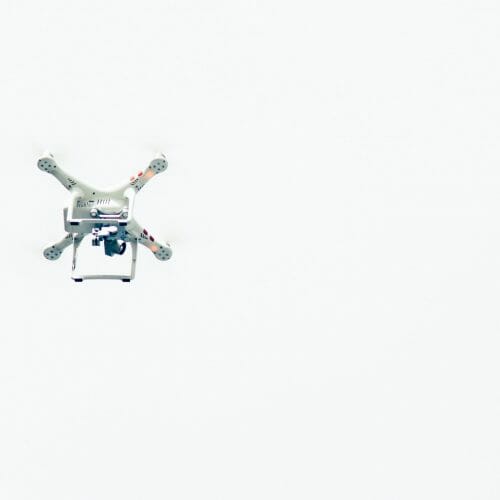It’s time to change AI’s bad rep
Data can be our greatest ally and Artificial Intelligence (AI) has the potential to propel human-kind towards what we’re only able to imagine in science fiction. To get there we only need a minor shift in mentality, a bit of cautious optimism and some major investment in innovation. While it appears that the world is charging steadfast towards an all-powerful problem-solving AI, some of the greatest minds of our time, including Elon Musk and Bill Gates, hold fearful-respect for Artificial Intelligence.
These fears have a strong basis given the fact most of the world’s advanced technology has evolved from some aspect of military research and development. So, should we really worry about a ‘Matrix-style’ world takeover, or will we finally answer the “ultimate question of life, the universe, and everything”, to quote The Hitchhikers Guide to the Galaxy. AI is truly dividing the scientific community and public on whether it will be helpful, harmful or indifferent, and many question if we should even welcome it into our future at all? Philosophy aside, AI is already here; it’s all around us and a part of our everyday lives.
AI will, over time, enable us to work less, create more, and ultimately allow everyone to live a more enriched and connected life.
But it’s a common misconception that AI is a science fiction pipedream, much of our lives are already influenced and made better by advanced automation and AI. We have been on a journey to automate complex or routine processes for a millennium, and amazingly have had automation such as auto pilot in airplanes for over a century (impressively, first successfully implemented in 1912!) To many, the sheer thought of a pilotless airplane flying across the ocean makes some people feel uneasy, yet they don’t realise that today’s airplanes flying us around the world spend 90% of the flight on autopilot – even on landing in some new airplanes…gulp!
AI already impacts so many of the services we wouldn’t want to give up; the metros currently being built in the Middle East are driverless, online shopping and take-away food delivery are using AI in some capacity (devilishly influencing to get you to upsize your soda and add-on some chocolate cake). We are struggling to differentiate real people from so called “chatbots” when talking to our bank or paying our electric bill online.
Admittedly there are different levels of AI, some still falling into the automation category, but, usually categorised into Narrow AI, Strong AI and Super AI. Narrow is the AI we are all currently using on a daily basis, advanced algorithms that drive targeted advertisements on social media, drive our home assistants such as the Amazon Echo or Apple’s Siri. Broadening capabilities, Strong AI can do a whole lot more and can cope with many generalised tasks as well or better than a human can, such as unsupervised driving or winning a game of chess. Strong AI will lead us into an era of fully intelligent robots and ultimately Super AI that will learn, evolve itself, and decide if it is our friend or foe. And that is where public concern comes in – if the first Super AI is developed by the Military, and we slingshot these Super AIs into our everyday life, what’s next?
As an engineering leader, I have a responsibility to understand and showcase the positives of Artificial Intelligence and work to find new ways of incorporating this emerging technology into our workflow and ultimately into the places, buildings, and infrastructure we design. With advanced design tools that leverage Generative Design, we can maximise the efficiency of a mall carpark, or when automated vehicles make car parking obsolete altogether we can quickly redesign it into more retail space, or even something else like a school or hospital.
When we peel away all the motivations behind AI development, we can see that AI is truly intended to help people, and not to hinder (or exterminate) them. It is being developed to make us more comfortable, live longer, connect better and sidestep many of the engineering restraints we may have to design for the future. We have the data, and through an Internet of Things we are deploying tools to gather immense amounts of it from our environment. This data is the key to AI. AI is data hungry and the Super AIs of the future will thrive on the vast amounts of information available from us.
Data is perhaps where the fears of AI are rooted, as a fine line will need be drawn between helpful data and privacy invasion. Your personal data is no longer your credit card number or date of birth as devices around you are gathering information on your eating habits, heart rate, hobbies, how fast you like to walk, what you read before you go to bed and even who your true friends are. We will ultimately need to instil hard-coded ethics into the fabric of our AIs, or possibly give them a “food allergy” of sorts to prevent the development of autonomous weapons or widespread social manipulation.
The Super AIs of the future will be safe, secure, ethical, and beneficial to our societies. Super AIs will work with us, for us – because that’s how we’re going to design them.
But what if we don’t, what if we design AIs with cavalier overconfidence that we can’t control? A Super AI with access and capacity to process all of our data? Well, you’ve seen the movies.
So, AI is coming. Just like the computer microprocessor, we’re about to have a moment in history that will launch AI into the mainstream and forever embed it into our society. It is our job now to think about our future world, anticipate what AI will bring us and prepare for it now to give our communities the best chance to thrive.


